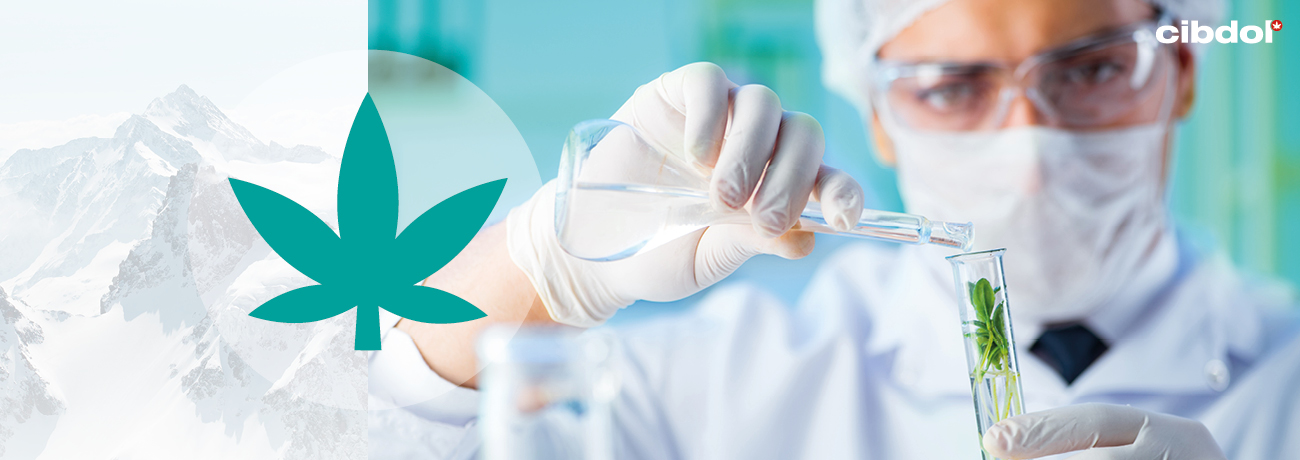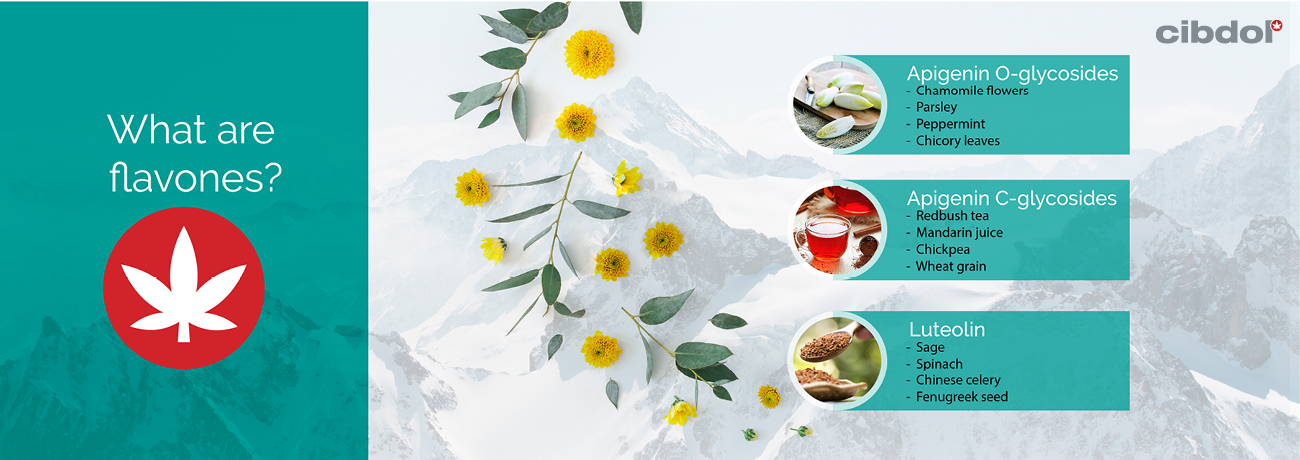What Are Flavones?

Flavones are a large subgroup of flavonoids currently garnering attention due to their biological activity in humans. Flavones are defined by their difference in molecular structure to other subsets of flavonoids. They are prevalent in plants with white and cream-coloured flowers, and act as natural pesticides while also helping modulate bacteria and fungi in root systems. Several food sources also contain flavones.
Colour
Flavones are classified as colourless, but can influence plant pigment in conjunction with other chemical compounds.
Also found in
Several flavones exist, but the most common types include:
• Apigenin O-glycosides
Chamomile flower, parsley, peppermint, and chicory leaves.
• Apigenin C-glycosides
Redbush tea, bergamot juice, mandarin juice, chickpeas, and wheat grain.
• Luteolin
Sage, spinach, Chinese celery, fenugreek seed, and kiwi fruit.
Supporting research
Although researchers have managed to isolate several flavones, their exact influence on human physiology remains elusive. The bioavailability, absorption, and metabolism of flavones are currently under review. Preliminary results indicate that flavonoids may impact oxidative stress, cardiovascular risk, and pro-inflammatory signalling.
Micronised flavonoids showed positive results in a randomised clinical trial. Fifty patients were treated with flavonoids to see what effect the compounds had on bleeding from internal haemorrhoids. Researchers found that patients treated with flavonoids showed "rapid cessation of bleeding and a reduced risk of relapse".[1]
Seven men and seven women took part in a 1999 study for the Institute of Food Safety and Toxicology in Denmark. Using parsley, a food source rich in apigenin/apigenin O-glycoside, researchers monitored the flavone's impact on oxidative stress. Alongside a carefully controlled diet, results showed that "parsley seemed, partly" to influence the enzymes and biomarkers involved in oxidative damage.[2]
An in vitro study on pro-inflammatory signalling and the impact of flavones found that they may inhibit inflammatory gene expression. Both apigenin and luteolin "selectively blocked" pathways of activity, "demonstrating a functional diversity" that required further investigation.[3]
A 1998 study published in the American Journal of Clinical Nutrition examined the effect of quercetin and apigenin on healthy volunteers. The study concluded that while in vitro concentrations of flavones had antiaggregatory effects, in vivo results did not. The potential impact of dietary flavones requires further investigation.[4]
Safety and side effects
Due to the limited study into flavones, little is known about safety and possible side effects. There is preliminary evidence to suggest excessive flavone intake may encourage mutagens and pro-oxidants, or inhibit enzymes in the liver (cytochrome P450). However, as flavones' mechanism of action remains largely unknown, further investigation is required.
[1] Misra, M. C., & Parshad, R. (2000). Randomized clinical trial of micronized flavonoids in the early control of bleeding from acute internal haemorrhoids. British Journal of Surgery, 87(7), 868–872. https://doi.org/10.1046/j.1365-2168.2000.01448.x [Source]
[2] Nielsen, S. E., Young, J. F., Daneshvar, B., Lauridsen, S. T., Knuthsen, P., Sandström, B., & Dragsted, L. O. (1999). Effect of parsley (Petroselinum crispum) intake on urinary apigenin excretion, blood antioxidant enzymes and biomarkers for oxidative stress in human subjects. British Journal of Nutrition, 81(6), 447–455. https://doi.org/10.1017/s000711459900080x [Source]
[3] Ruiz, P. A., & Haller, D. (2006). Functional Diversity of Flavonoids in the Inhibition of the Proinflammatory NF-κB, IRF, and Akt Signaling Pathways in Murine Intestinal Epithelial Cells. The Journal of Nutrition, 136(3), 664–671. https://doi.org/10.1093/jn/136.3.664 [Source]
[4] Janssen, K., Mensink, R. P., Cox, F. J., Harryvan, J. L., Hovenier, R., Hollman, P. C., & Katan, M. B. (1998). Effects of the flavonoids quercetin and apigenin on hemostasis in healthy volunteers: results from an in vitro and a dietary supplement study. The American Journal of Clinical Nutrition, 67(2), 255–262. https://doi.org/10.1093/ajcn/67.2.255 [Source]
[1] Misra, M. C., & Parshad, R. (2000). Randomized clinical trial of micronized flavonoids in the early control of bleeding from acute internal haemorrhoids. British Journal of Surgery, 87(7), 868–872. https://doi.org/10.1046/j.1365-2168.2000.01448.x [Source]
[2] Nielsen, S. E., Young, J. F., Daneshvar, B., Lauridsen, S. T., Knuthsen, P., Sandström, B., & Dragsted, L. O. (1999). Effect of parsley (Petroselinum crispum) intake on urinary apigenin excretion, blood antioxidant enzymes and biomarkers for oxidative stress in human subjects. British Journal of Nutrition, 81(6), 447–455. https://doi.org/10.1017/s000711459900080x [Source]
[3] Ruiz, P. A., & Haller, D. (2006). Functional Diversity of Flavonoids in the Inhibition of the Proinflammatory NF-κB, IRF, and Akt Signaling Pathways in Murine Intestinal Epithelial Cells. The Journal of Nutrition, 136(3), 664–671. https://doi.org/10.1093/jn/136.3.664 [Source]
[4] Janssen, K., Mensink, R. P., Cox, F. J., Harryvan, J. L., Hovenier, R., Hollman, P. C., & Katan, M. B. (1998). Effects of the flavonoids quercetin and apigenin on hemostasis in healthy volunteers: results from an in vitro and a dietary supplement study. The American Journal of Clinical Nutrition, 67(2), 255–262. https://doi.org/10.1093/ajcn/67.2.255 [Source]








